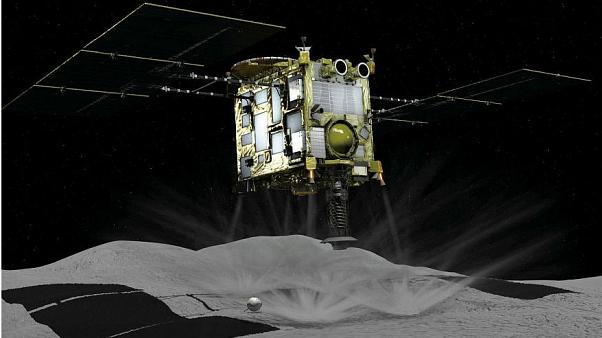Japan lands spacecraft on distant asteroid to collect samples

The Japan Aerospace Exploration Agency (JAXA) announced the news on their social media Wednesday morning.”The state of the (Hayabusa 2) spacecraft is normal and the touchdown sequence was performed as scheduled. Project Manager Tsuda has declared that the 2nd touchdown was a success!,” the agency said on its Twitter.After landing, the Hayabusa 2 is expected to collect samples from beneath the surface of the asteroid, which Japanese scientists hope will shed new light on the evolution of the solar system.The Agency said the operation, if successful, would mark the first time a space probe has taken samples from below the surface of an asteroid.Even reaching the asteroid is a huge achievement, let alone touching down on the surface. Ryugu is just under 3,000 ft (914 meters) wide and orbiting tens of millions of miles from Earth.The spacecraft first arrived at the asteroid in June 2018 to carry out experiments. In April it blasted a small crater on the surface of the rock using a device packed with plastic explosive, to collect samples from deeper within the asteroid.Hayabusa 2 will depart Ryugu in December 2019 and return to Earth by the end of 2020 with its precious cargo of samples to be analyzed by scientists.If it makes it back to Earth on schedule it will be the first mission to bring back samples from a C-class asteroid, which hasn’t been visited before.John Bridges, a professor of planetary science at the UK’s University of Leicester, told CNN that the Hayabusa 2 mission is interesting because of Ryugu’s C-class status.C-class is the most common variety of known asteroids. “One thing I’m pretty sure of is that it will throw up some unexpected results,” said Bridges, who believes that information from Ryugu samples could make us think again about the early evolution of the solar system.Beneath their desolate surface, asteroids are believed to contain a rich treasure trove of information about the formation of the solar system billions of years ago.CNN’s Euan McKirdy contributed to this article.




